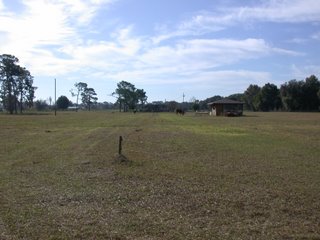 I've been trying to learn rotational grazing since we started fooling with sheep a few years back.
I've been trying to learn rotational grazing since we started fooling with sheep a few years back.The farm is divided into three different pastures with permanent fence. The leased land would count as one more pasture I guess.
I subdivided the big home pasture, 10 acres give or take, into four paddocks with temporary electric fences.
I subdivided the leased land into four paddocks originally using the same sort of fencing. I have since dropped that down to two paddocks. This is because there are only two water sources over there and sharing them between paddocks was not working too well.
What I have is a bunch of small pastures rather than a proper rotational grazing system.
I still have a very low stocking rate. Something like half of what this land should carry. I want to grow my way larger instead of buying my way larger.
In the late fall I was having trouble with the sheep moving through the electric fences.
I tried several things to fix this including changing from plastic twine to 14 gage aluminum.
I went to three strands from two on the rented land. I got a better energizer.
I had a notion that the sandy soil and the dry weather had something to do with it but I had no idea what to do about it.
So a few weeks ago I was reading though book "Greener Pastures on Your Side of the Fence" by Bill Murphy. He teaches a much more intense form of rotational grazing than I have been using. No suprise he uses electric fences.
At one point he states that in dry sandy soils as many as ten grounding rods may be needed. He recommends grounding to a metal culvert under a roadway or an unused well casing.
My energizer was connected to one grounding rod. I moved the unit back to the well house for our old (no longer in use) well. I has a two inch galvanized well casing about 80 feet deep.
All the paddock fences are hot now even though most of the gates are open. So far they seem to be staying well clear of them although I haven't seen any of them get shocked.
So far so good.

1 comment:
I was going to say it, but you figured it out on your own. We have a real wet soil most of the year, but I use at least 4 rods, even on a short run.
Speaking of, do you have a post about how you fence your chickens in? I'd like to set up a fence so mine can have at the grass, but I've never tried to fence chickens in before. I'm looking at building a chicken tractor, but I'd like to know what the options are for fencing in a larger area, too, and how to build a fence they won't just fly over.
Post a Comment